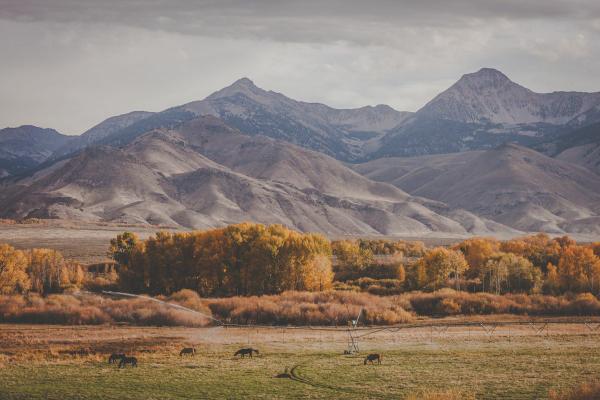
The wolves are back in force. Jerry, a wildlife biologist friend of many years, cut the fresh tracks of a large pack on the snowy deck of the Hat Creek Bridge yesterday. Just hours before he arrived there, they quietly padded over the wooden structure that spanned the frothy cascade of Hat Creek in the midst of the thickly cloaked dark spruce forest in that part of our remote summer grazing range (he was almost 40 miles from pavement and any human habitation).
Just 6 weeks ago, we were within a few miles of that spot with 300 head of yearlings in Park Creek Camp grazing the high ridges and thick Douglas-fir forests before wildfire kicked us off. In addition, it was just 50 yards from where my weed pulling crew camped for two weeks in the early part of the summer. I had the two meet in my mind’s eye; probably nothing would have happened, but I’ve had wolves momentarily stare at me, thinking God only knows what. But I know there’s knowledge behind those big canine eyes. Wolves have a thought life.
I know this, because I live with dogs. We keep 3-5 cow dogs around us on the ranch. And 2 big white furry Great Pyrenees to run coyotes, cougars, and the occasional wolf off from our home place. Occasionally, I’ll stalk the big white dogs at night, when they can’t smell me on the wind or see me (I’ll quietly position myself downwind of them in the shadows). I purposely make subtle noises as I stalk them, brushing my feet through the grass. They hear me, and sniff and stare, bristle their back hairs and growl with bared teeth into the black, seeing only the ghost of my shadow or my shape. And I know they are staring at me, sizing me up, just as those wolves do.
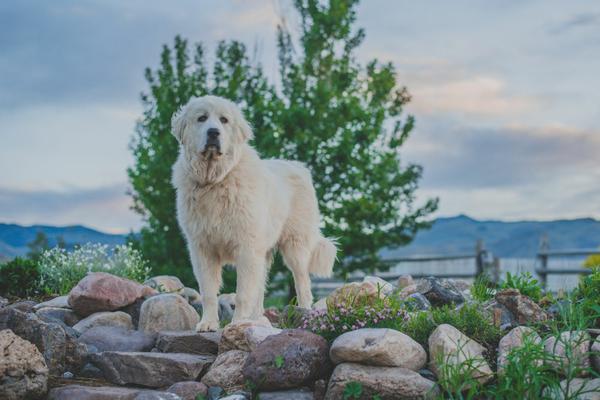
I know they are domestic dogs, but it gets unsettling for me as the human all the same. In my rational mind, I say that we are the ultimate top of the food chain. I try to keep calm, and tell myself that they’ll not jump me when they smell me just before contact. But there is something in us–despite our self-proclaimed “top dog” position—something that flips; we reach a tipping point. And in the face of a 120 lb canine on the prowling snarl, coming in on me, stalking, protecting my family behind them in the house, it is all I can do not to turn tail, like the lowest form of prey and break out in a run.
I resist these impulses, likely harking back to my ancestor’s encounters with saber tooth tigers and dire wolves, that say “Run. While you still can.” Instead I stand firm despite the deep growl that it seems like I can feel with my feet. I stand my ground a little longer as potential prey, and then, suddenly, I flip the tables to see what would happen. I resist all prey inclinations and burst in a pretended fury toward the big white dog, through the black, my own mouth snarling and growling as best I can as I run towards them.
I’ve tried this several times. Most of the time, with such a surprising turn of events, the same flip happens in the canine mind; predator flips into prey, and they run with tail between legs, yelping. This happens when they are young. When older, most of them become stoic. They hold their ground and say “come what may, this is who I am.” We had one big male a few years ago who just said, “Bring it on.” He melted into a bundle of joy when he winded me or heard my familiar voice (there was always a certain amount of relief for me at this point, because I knew I’m playing with fire).
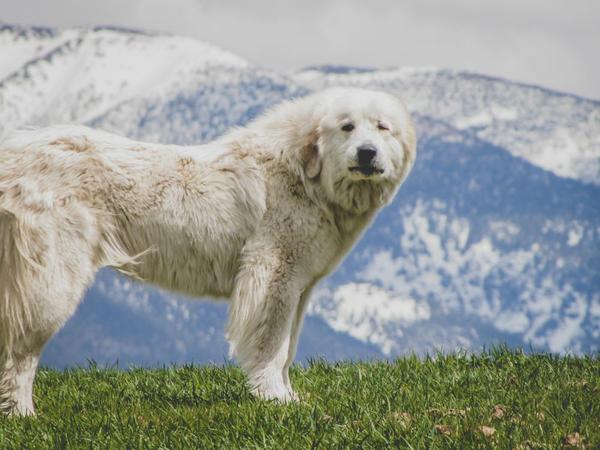
And so, I wonder what a wolf would do, and what kind of human would have the nerve and presence of mind to try jumping one. The thought tempts me. I’ve have yet to meet someone who has tried.
The wolf tracks on the bridge were large. Four to five inches in diameter. People really have no idea how large these canids are until they see them. They are formidable. I remember when our cowboys Jess and Josiah first encountered two large males on the ridge above them, as they rode horseback out of the headwaters of Little Hat Creek.
Jess: “They were huge, Glenn. Probably pushing four feet at the shoulder.” He held his hand near his chest. “And they just paralleled us, checking us out.” The horses they rode kept a wild and whitened eye toward their unwelcome stalkers. I think Jess was probably a little high on the height estimate. Most larger wolves being monitored in Idaho stand somewhere around 33-36 inches at the shoulder. That is still a large canine and having a pack to feed presents a math equation that solves for a lot of needed protein.
It’s why we were having such a problem with predation on our cows. With enough hungry wolves, a bovine wouldn’t stand a chance, despite our cows being canine fighters. We raised them to be quite aggressive; our mother cows are left with all the wild cow instinct intact. All of us on the ranch have been hit and launched by a cow protecting her baby. I know several neighbors who have been hospitalized by a cow attack.
In those days between 2007 and 2014, we were losing as many as 14 head in one grazing season. The wolves were in the midst of us then, at the peak of the summer. On the nights we camped out there, we would hear them howl at night, echoing across mountainside and canyon from our bedrolls under cover of old growth Douglas-fir forests.
We didn’t only lose cattle. Josiah lost one of his good cow dogs, picked off on a hot day when he was lagging behind the riders. The dog simply disappeared. The wolves must have been shadowing the crew for most of the day, but we never noticed until we crossed their tracks on the way back home.
Although Idaho had wolves historically, wolves had been extirpated from the state by the late 1920s. In 1995 and early 1996, 35 wolves were released in central Idaho and by 2002, the recovery goals of 10 breeding pairs was met. Talk of delisting Idaho wolves from the Endangered Species Act began, and after a lot of politics (which we won’t go into), wolves were delisted in 2011, and Idaho began issuing tags for limited hunting of wolves.
Conservative estimates put the number of wolves in Idaho at around a thousand, but I talked to a local biologist a few days ago, and he believed there were 1200 to 1400 wolves today in Central Idaho. “There’s unlimited habitat [the largest wilderness in the US outside of Alaska], and unlimited food in abundant deer and elk.” Even today, no-one knows what the carrying capacity of the landscape is.
I know a hunting season on wolves is controversial, but there are two positive outcomes. First is that wolf conflicts with the few urban/suburban areas in central Idaho are now very rare, whereas a few years ago bold young wolves would threaten people and pets in people’s yards. That is no way to coexist or maintain support for wolves. With the opening of a limited hunting season, the highly intelligent wolves learned that avoiding humans was smart, and so they stay away from towns.
Second, it gave us an opportunity to figure out a way to coexist with them on our range. When we first conceived this 24/7 inherding project, we (well, especially the young men on our crew) had spirited discussions about how to construct things to scare wolves away: rubber ball guns and special firecrackers were high on the list. But we never had to.
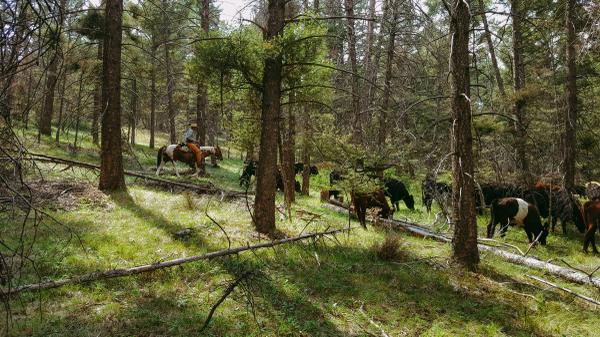
We rarely see wolves anymore. The human smells and sounds of us living with our cattle 24/7 make wolves uncomfortable, and they head into remote areas of our range, in the thickest timber, in the alpine parts of our country. Places where snow hangs around until July; where they share the thick bush with summering elk, trying to escape heat, and cool temperature loving wolverines. That part of our range, with its thick sub-alpine forests, bubbling trout streams, azure blue lakes (The Hat Creek Lakes) and rocky granitic peaks has more in common with Alaska than country down here in the lower 48.
It’s a pretty simple and elegant solution: keep humans with the beeves at all times, even at night. It’s what David did with sheep in the Bible. He protected them from bears and lions as a shepherd. Shepherding is one of the oldest professions. Cowboys in the 1800’s lived with their herds for the same reason.
It’s been 5 years now with absolutely no death loss, wolves or otherwise, compared to losing 4 head a year, on average, and some years many more. We see an occasional wolf, but never have been stalked by them as in the old days.
But there have been additional benefits. What I’m realizing is that the more we can embed ourselves into the habitat we work on, the more we learn about its good gifts; it’s easier to succeed up there when we live up there. We become part of the land, transcending beyond simple visitation. And that makes us better stewards, and teaches us how we can best capture some of the fat of it for our own beeves to imbibe in.
And so, as we peacefully coexist with the other inhabitants of our wild country like wolves, cougars and bears, our beeves become more like wild bison or elk in their habits. They settle into the wild mountain country, and learn the best plants to graze. We show them a diverse salad bar of over 500 plants on wild mountainsides to choose from (most domestic pastures only contain 20-40 species). In addition, they become accustomed to our presence with them. We sleep right next to them, after all, and as a result, they life a non-stressed life moving quietly alongside us. They actually look to us as to where to go for the day’s forage.
And for that, I think it all has been worth it; the wolves have actually made our beef better, because we now herd our beeves to the best grass with people on horseback 24/7, all summer long. It was an unrealized advantage. Now, our beef tastes better, and I believe packs more nutrition.
And it all happened because we listened to wolves. I look forward to see where this journey of raising wild protein next takes us.
Glenn, Caryl, Girls and Cowhands at Alderspring


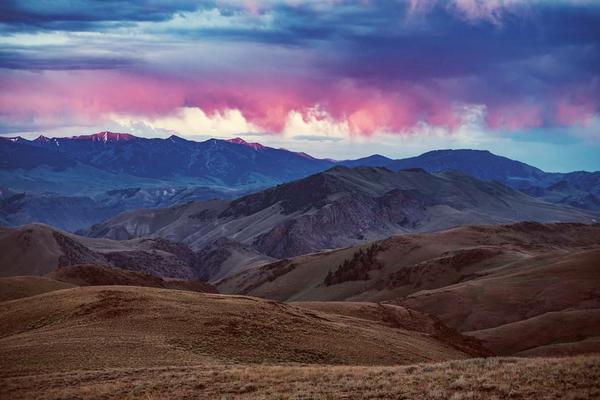



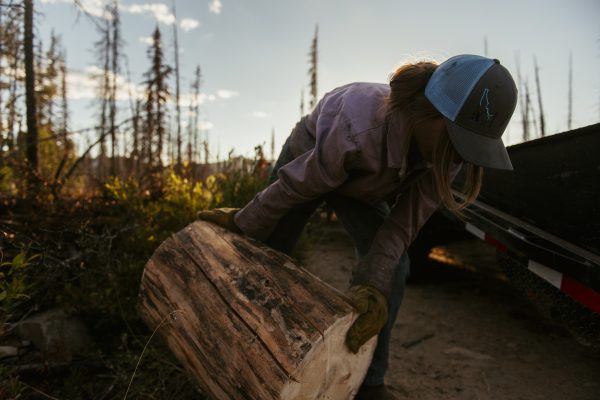
Maureen Connors
I came back to this post (among others) in light of new legislation in Idaho (SB1211) and Montana aimed at drastically reducing wolf populations. It leaves a pit in my stomach because the simple solution for preventing livestock loss seems to be what you and your crew are doing. It is demoralizing that other ranchers would rather nearly exterminate a species than simply practice responsible animal husbandry. It seems like some people are just too lazy to do things right and the entire ecosystem will suffer as a result. Elzingas, I wish more ranchers followed your example. You’re out there doing the work and not just preaching from some big city along either coast. I’m so grateful for people like you. Not that you don’t have enough on your plate, but I’d be interested in hearing whether you expressed any concerns about SB1211, and if you did, what the response was.
Shannon Weaver
Beautiful story as always. It’s good to hear an updated version from the ranchers prospective on this controversial issue. My favorite â¤ï¸ part was about David!!ðŸ™ðŸ™
Diana
You can be sure, when we eat your beef we also think about all you do. Both for the animals and the ecosystems, in how you raise them. Thank You for doing the best for all.
Caryl Elzinga
Thank YOU, Diana!